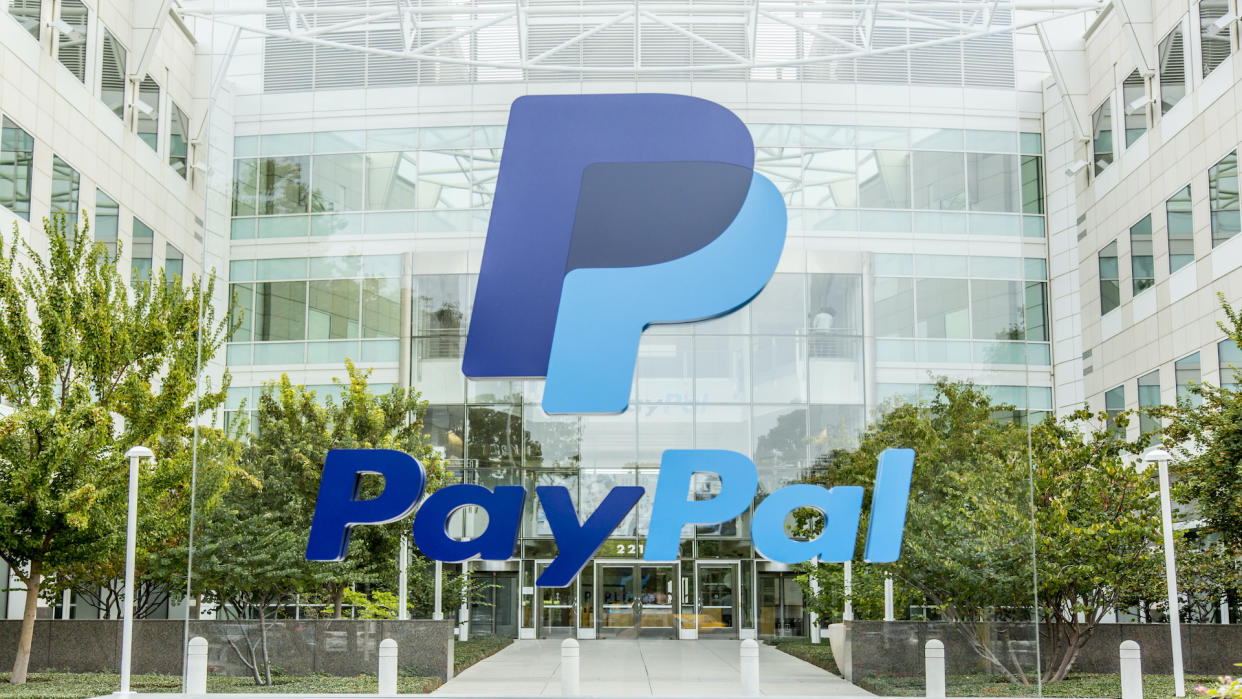PayPal Stock: What You Need To Know Before Investing

PayPal is one of the most recognized names in payment processing, not only for those who make and receive payments using its platform but also for investors who hope to profit from the company’s success. Investing in PayPal is easy, but it’s important to know what you’re getting into before you purchase your shares.
See: 3 Things You Must Do When Your Savings Reach $50,000
PayPal by the Numbers
PayPal’s closing price on July 26 was $72.96. Here are some other metrics from that date, as reported by Yahoo Finance:
52-week range: $58.95 – $103.03
Market capitalization: $81.93 billion
Beta: 1.32 (32% more volatile than the overall market)
P/E ratio: $31.65
Dividend yield: N/A
In its fourth-quarter 2022 earnings report, PayPal reported $27.52 billion in revenue, up from $25.37 billion in 2021. Profits declined steeply, from $4.17 billion in 2021 to $2.42 billion. Earnings per share also fell, from $3.55 to $2.10. However, news coming from the Q1 2023 report was largely positive, with better EPS growth than expected and solid growth in total payment volume and net revenue.
PayPal is expected to release its Q2 earnings report on Aug. 2.
How To Buy PayPal Stock
You’ll need a brokerage account to purchase PayPal stock. If you don’t already have one, look for a company that offers commission-free trades — and low account minimums if you plan to maintain a modest balance. Also consider looking for a brokerage that allows you to trade fractional shares. That way, you can invest any dollar amount you want, subject to minimums, in a stock rather than purchase full shares — a handy feature if at some point you want to buy an expensive stock like Berkshire Hathaway, which trades for hundreds of thousands of dollars per share.
While you can pay to have a broker execute trades on your behalf, you’ll save money with a self-directed account that lets you buy and sell on your own. GOBankingRates evaluated a number of online platforms and found these to be the best stock trading sites for beginners:
Once your account is set up and funded — you’ll have to transfer money into the account in order to have funds to trade with — you can buy your PayPal stock. Here’s how:
Decide how much to invest. If you’re buying whole shares, this will mean deciding how many shares you want. If you’re buying fractional shares, you’ll decide on a dollar amount to invest.
Search PayPal’s stock using its ticker symbol, which is PYPL.
Select which type of order to place: a market order to purchase the shares at the best price available when you submit the order; a limit order to purchase the shares at a price you specify or for less than that amount; or a stop order to purchase for a price not yet available in the market.
Enter the number of shares or dollar value you want to invest.
Submit your order.
PayPal Then and Now
PayPal was one of the first fintech companies, entering the digital payment space over 20 years ago as a firm named Confinity that was looking for ways to create a digital payment system for businesses and consumers. Within two years it had over 1 million users, mostly as a result of a partnership with eBay that eventually made PayPal eBay’s official payment provider, according to a timeline on its website. Bill Me Later, an early “buy now, pay later” company that eventually became PayPal Credit, joined the PayPal ranks in 2008.
By 2011, PayPal had over 100 million active users in 190 markets. Those users could make digital payments in 25 different currencies online or via the new mobile app, or defer payments through Bill Me Later.
Over the past 10 years, PayPal has grown to encompass additional payment processing brands Braintree, Venmo and Xoom as well as PayPal Working Capital, which issues business loans companies repay from their PayPal sales. Although PayPal has been a public company since 2002, it only began trading under its current ticker, PYPL, in 2015, when it spun off from eBay.
The company has continued to grow. In addition to forming over 40 strategic partnerships with credit card networks and leading banks, PayPal has acquired a number of payment-processing, e-commerce and risk-services companies and expanded its platforms accordingly.
A 2022 rebranding refocused and reinforced PayPal’s mission to “democratize financial services to ensure that everyone, regardless of background or economic standing, has access to affordable, convenient, and secure products and services to take control of their financial lives.”
Is PayPal a Good Stock To Buy Right Now?
PayPal shares are down 76% from their all-time high of $308.53 on July 23, 2021, and they’re down almost 29% from their 52-week high of $103.03. Analyst Tom Hayes called it “probably one of the most hated stocks right now” in a June interview with Yahoo Finance. However, Hayes also noted that PayPal has 435 million users worldwide, equaling 3 billion payments. He blamed most of the current negative sentiment on “crazy” valuations during the pandemic and also named an upcoming leadership change as a factor.
Analysts polled by MarketBeat rate PayPal a moderate buy. They predict a 32.1% price increase in the next 12 months and a 17.62% increase in earnings per share. Victor Dergunov, investing group leader at Seeking Alpha, wrote in a May column that “PayPal has plenty of growth ahead,” and he said the stock was dirt cheap at that time — it closed at $61.69 on the day that column was published.
While less of a bargain now, with a P/E ratio of 31.65 as of July 27, no polled analysts recommend selling and fewer than one-third recommend it as a hold as opposed to a buy or strong buy.
Data was compiled on July 27, 2023, and is subject to change.
This article originally appeared on GOBankingRates.com: PayPal Stock: What You Need To Know Before Investing
